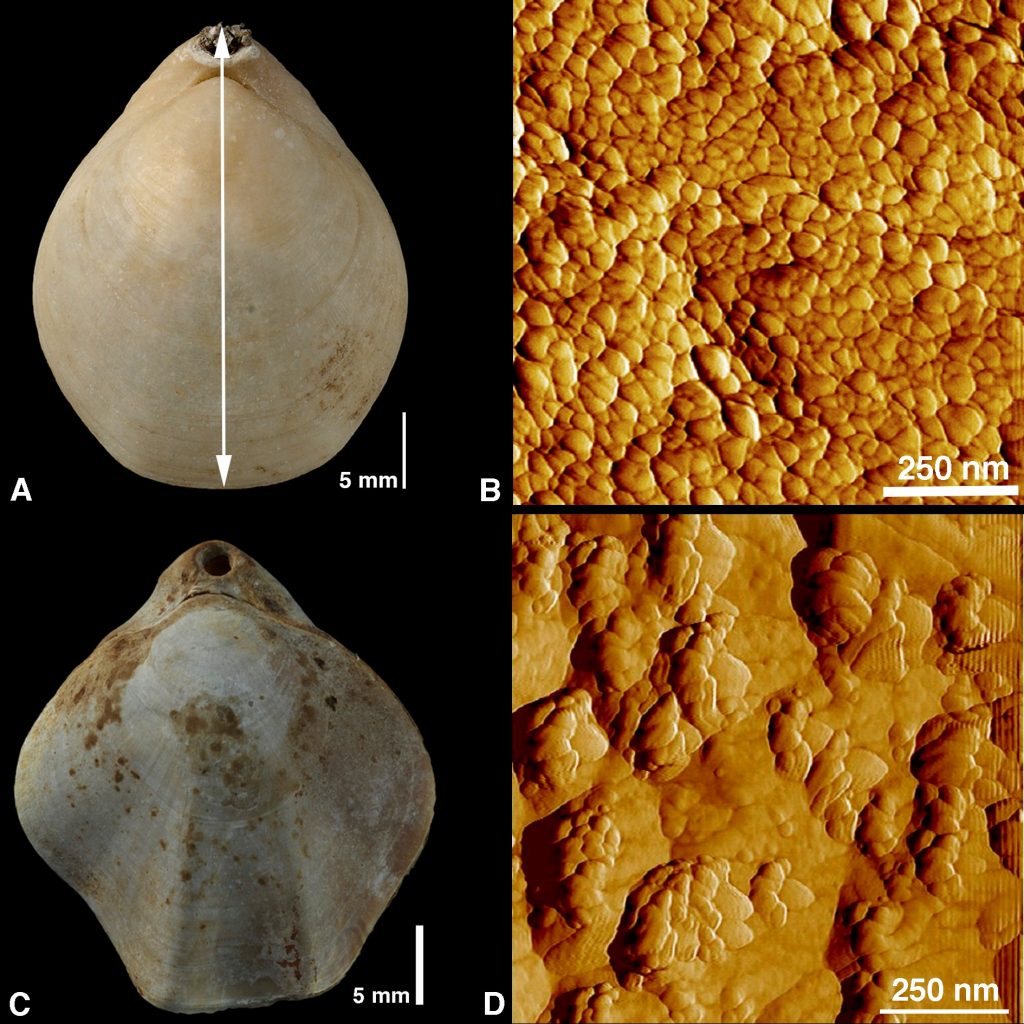
AFM4aStory
Upgrading the Interdisciplinary Multiscale Atomic Force Microscope Platform for understanding the historical story of archaeological materials
Responsabilité scientifique :
- Cindy Rountree
- Dana Stanescu
Axes de recherche :
Altération et conservation
Fossiles et témoins de vie ancienne
Paléo-environnements et taphonomie
Fossiles et témoins de vie ancienne
Paléo-environnements et taphonomie
Financement :
- DIM Matériaux anciens et patrimoniaux
- CEA
- CNRS
ID projet : IDF-DIM-MAP-2018-1-004
Descriptif :
Since, Feynman’s famous lecture in 1960 titled “There is Plenty of Room at the Bottom” researchers from a vast number of fields have been thinking small. The first Atomic Force Microscope (AFM) in 1986 aided researchers in this quest by imaging both conductive and insulating materials at the nano-scale. Today’s AFM applications span scientific [1], historical [2], biological [3] and engineering [4] endeavors. The IMAFMP platform (Interdisciplinary Multiscale Atomic Force Microscope Platform – funded via équipement mi-lourd DIM 2011: C’Nano and ISC – IDF) welcomes researchers from across the full spectrum of sciences. The principal investigator and manager of the platform, Cindy L. Rountree, along with IMAFMP partners have had the privilege to work with several projects close in lines with DIM-MAP objectives. First, the IMAFMP enables S. CHARBONNIER and D. GASPARD from Centre de Recherche sur la Paléobiodiversité & les Paléoenvironnements (CR2P), Muséum National d’Histoire Naturelle, Sorbonne Université, to understand the blurring effect in the hierarchical architecture of the shell layers of some rhnychonelliform brachiopods via the state of the art Nano-Mechanical AFM. Secondly, the IMAFMP welcomed F. Mercier (CNRS-NIMBE) with the help of L. Tortech (IMAFMP researcher) in their search to understand the corrosion layer growth in an archeological nail. Preliminary tests [5] concerning both projects show the benefits of the IMAFMP platform to historical artifacts and fossils. Additionally, both projects would greatly benefit from the upgrade proposed in AFM4aStory.
[1] K. Piroird, et al. EPL 113 (3) (2016) 38002.
[2] C. L. Rountree, et al. Crack growth in glasses due to environmental effects, in: Proceedings of the International Symposium on Glass Degradation, in Atmospheric Conditions, Hermann Editions, 2018, Submitted.
[3] D. Gaspard, J. Nouet, Journal of Structural Biology 196 (2) (2016) 197 – 205.
[4] A. Barbier, et al. Physical Review B 91 (3) (2015) 035417.
[5] D. Gaspard, Disorder introduced in the hierarchical architecture of selected fossil rhynchonelliform brachiopod shells disorder introduced in the hierarchical architecture of selected fossil rhynchonelliform brachiopod shells, in: 8th International Brachiopod Congress: “Brachiopods in a changing planet: from the past to the future,” 2018 – Session 5 “Biologic mineralization of natural materials and archives of geochemical proxies”.

